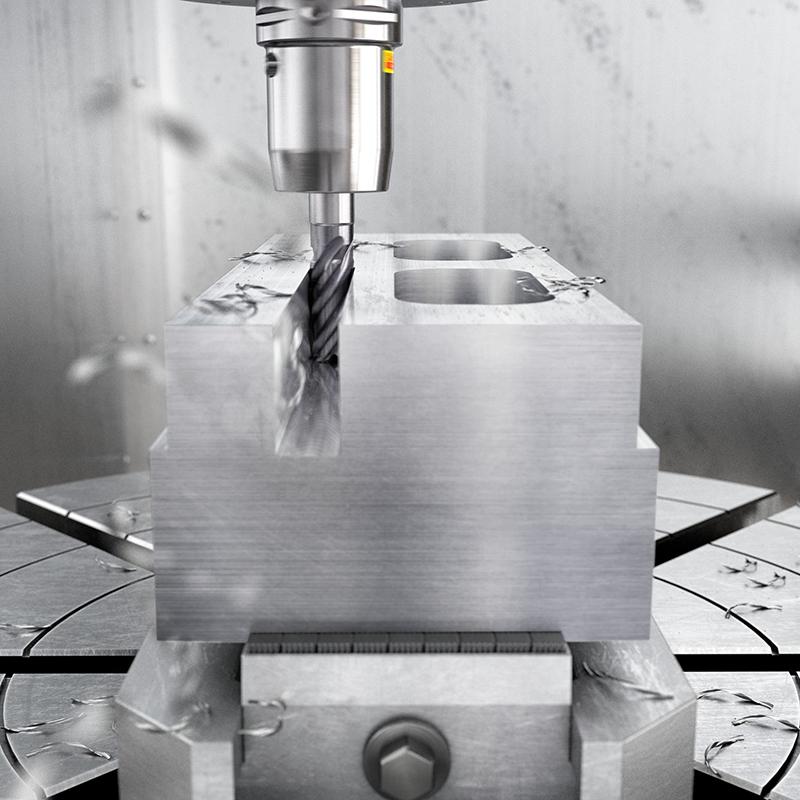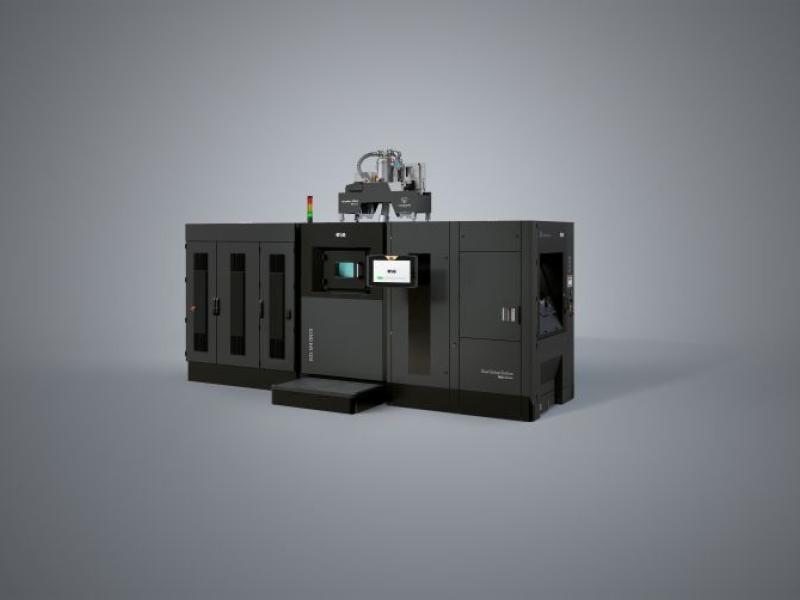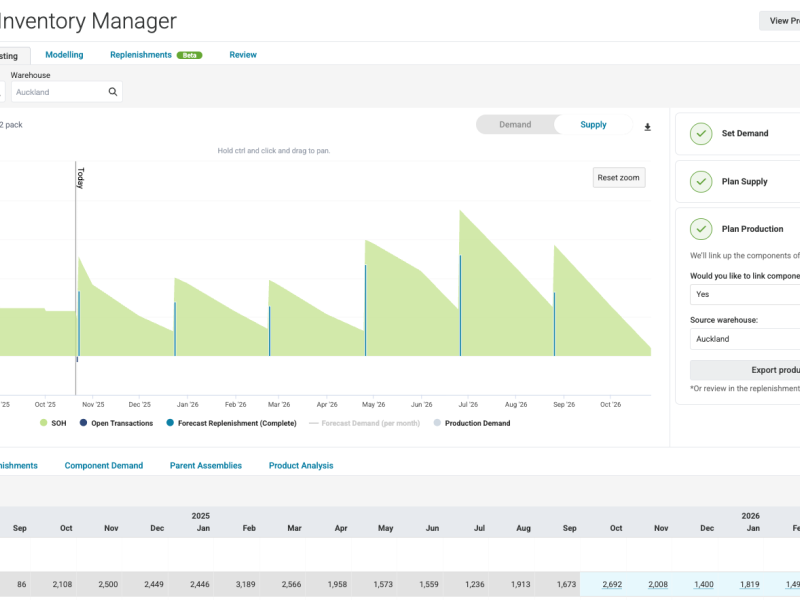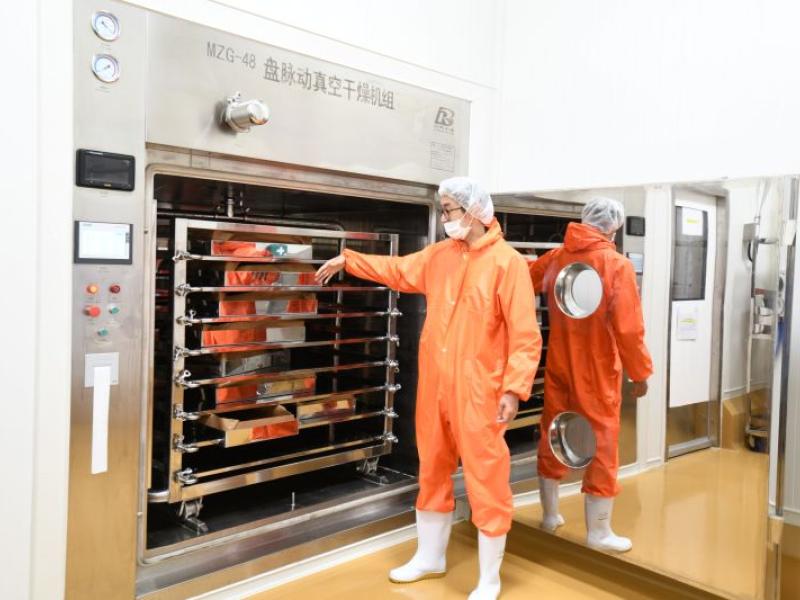There has been a huge shift in manufacturers’ attitudes around sustainability in recent years. Research by Schneider Electric and Omdia found that 49% of manufacturing companies expect improved performance and cost savings when investing in sustainability. But, while the conversation around manufacturing sustainability usually focusses on Industry 4.0 solutions, companies mustn’t overlook the significant role that machine tools like coated solid carbide end mills can play. Here, Anders Micski, Manager of Grades and Technology for Business Unit solid round tools (SRT) at Sandvik Coromant, explains how an advanced tool coating can support more sustainable machining.
Machine shops now realise that a proper sustainability strategy is the difference between success and failure — especially in light of today’s continuing supply chain challenges, and shortages both of materials and knowledge and skills. However, roadblocks stand in the way of manufacturing becoming more sustainable. Almost a third of manufacturing leaders surveyed by Schneider Electric and Omdia said their organisations legacy assets and infrastructure are an obstacle to becoming greener. 27% identified cost or budget is a key roadblock, and 19% cited culture change as a challenge, or the risk of changing their existing processes.
As a solution to these obstacles, manufacturers should instead consider the significant advantages of better machine tools on production sustainability. Longer tool life can certainly support sustainability and ties into a number of other advantages, including reducing the number of tools required in a production run and reducing the need for costly tool replacements. Another advantage of longer-lasting tools is the ability to produce more versatile products, for two reasons. First, a tool with a longer lifespan can be used for a greater number of production cycles before it needs to be replaced or serviced. Second, with longer tool life, the tool maintains its precision and performance over an extended period, which results in improved quality and consistency of the products being produced.
That isn’t to say that gaining a competitive edge in manufacturing is not challenging. On the one hand, reducing costs with the right tooling and optimisation strategies are shown to help dramatically cut machining times and extend tool life up to two-times or more. On the other hand, continual research and development of the current challenges facing machine shops is essential to ensure that tools are technologically-ready and up to the challenge.
Different kinds of wear
Let’s focus on solid carbide end mills. Several factors determine tool life in mills, such as the different kinds of wear, including crater and flank wear, and chipping of the cutting edge that is often a result of vibrations in the workpiece or machine tool.
Several design aspects of an end mill affect its wear resistance, including the tool’s substrate, coating and geometry. Geometry particularly effects the tool’s functionality — as written in the report Study on tool life and its failure mechanisms by India’s Kamala Institute of Technology & Science (KITS): “The geometry of the tool has some key influence in deciding the tool life, among which the rake and clearance angles are an important one.” In addition, the choice of material or grade for a tool can significantly affect its speed or feed in machining processes, by influencing such factors as tool wear resistance, tool hardness, heat resistance, and friction and chip flow.
Sandvik Coromant’s Department of Grades and Technology, part of its Business Unit for Solid Round Tools (BU SRT), continually researches these factors to find new ways to improve tool life. The team collaborates with another department within Sandvik Coromant R&D that is focussed on developing physical vapor deposition (PVD) coatings for tools. PVD is a process where the coating is deposited on the surface of the tool, in order to enhance its durability and functionality — and particularly tool life.
In order to explore new opportunities to extend tool life, the departments for Grades and Technology and PVD chose to focus their research on the influence of PVD coatings, excluding other factors like substrate and geometry. Sandvik Coromant’s research was also informed by input from its own customers, whose input helped Sandvik Coromant’s engineers further optimise the properties of the PVD coating.
As a results of this research, new coating solutions were developed to achieve further improvements in tool-life and therefore enhance the performance of the tool itself. They included one solution for ISO-P and another for ISO-M.
New coating
Sandvik Coromant’s ongoing R&D has led it to develop of a range of new coatings for solid carbide end mills. The latest is the Zertivo 2.0 range of coatings that combine world-class productivity with exceptional metal removal rate and the highest possible process security. This allows the full potential of the grade to be exploited. The Zertivo milling grade offers a very resilient cutting edge. This tough substrate and the optimised coating effectively resist edge-line chipping and cracks that can arise from difficult machining conditions.
Reliable milling
The Zertivo™ 2.0 coating is wholly unique and designed especially for use with CoroMill Plura HD solid end mills for heavy-duty roughing in steel and stainless steel with two new grades for ISO-P and ISO-M. CoroMill® Plura is a range of high quality solid carbide end mills that offer productive, efficient, and perfectly reliable milling solutions.
CoroMill Plura HD is Sandvik Coromant’s first choice solution for heavy-duty applications in steel and stainless steel (ISO-P and ISO-M), offering safe and efficient solid end milling. Thanks to the new Zertivo 2.0 coated grades tool life, process security and productivity are improved even further. The new grades allow for 30% higher cutting speed recommendations in primary application areas ISO P and ISO M, as well as ISO K and ISO S materials, due to their optimised flute shape, which provides effective chip evacuation.
Featuring tools for heavy roughing and finishing, CoroMill Plura works in various applications and materials, including difficult-to-cut materials and very hard steels up to 63 Rockwell hardness (HRc). The grades designed for stainless steel machining come in two variants: one with internal coolant for improved temperature control and chip flow, and one without internal coolant.
Performance tests
CoroMill® Plura HD enhanced with Zertivo 2.0 has been subjected to many performance tests against competing solid carbide end mills. One test involved machining an SS1672 (C45) 160 HB ISO-P workpiece, and another test machining a 1.4404 (316L) ISO-M workpiece.
The ISO-M workpiece was subjected to slot milling, for which the tools were run at the following parameters: a cutting speed (Vc) of 90 m/min, feed per tooth (fz) of 0,05 mm/tooth, radial depth of cut (ae) of 10 mm and axial depth of cut (ap) of 5 mm. CoroMill® Plura HD exhibited a 65% tool life increase. The ISO-P workpiece was subjected to dry shoulder milling with the following cutting parameters: a Vc of 235 m/min, fz of 0,1 mm/tooth, ae of 7,5 mm and ap of =5 mm. For that process, CoroMill® Plura HD exhibited a 150% tool life increase of the competitor’s tool.
Sandvik Coromant recommends the use of CoroMill Plura HD and Zertivo 2.0 in general engineering, automotive, stainless steel and steel. Going forward, Sandvik Coromant’s engineers specialising in machine tools and R&D plan to expand Zertivo 2.0 coatings across its tool line. In doing so, it expects the coating will help customers achieve improved performance and cost savings, as the shift among manufacturers towards sustainability continues.
To learn more about how Sandvik Coromant’s CoroMil® Plura HD solid carbide end mill, enhanced with Zertivo™ 2.0 coating delivers tool life advantages, visit the website.






